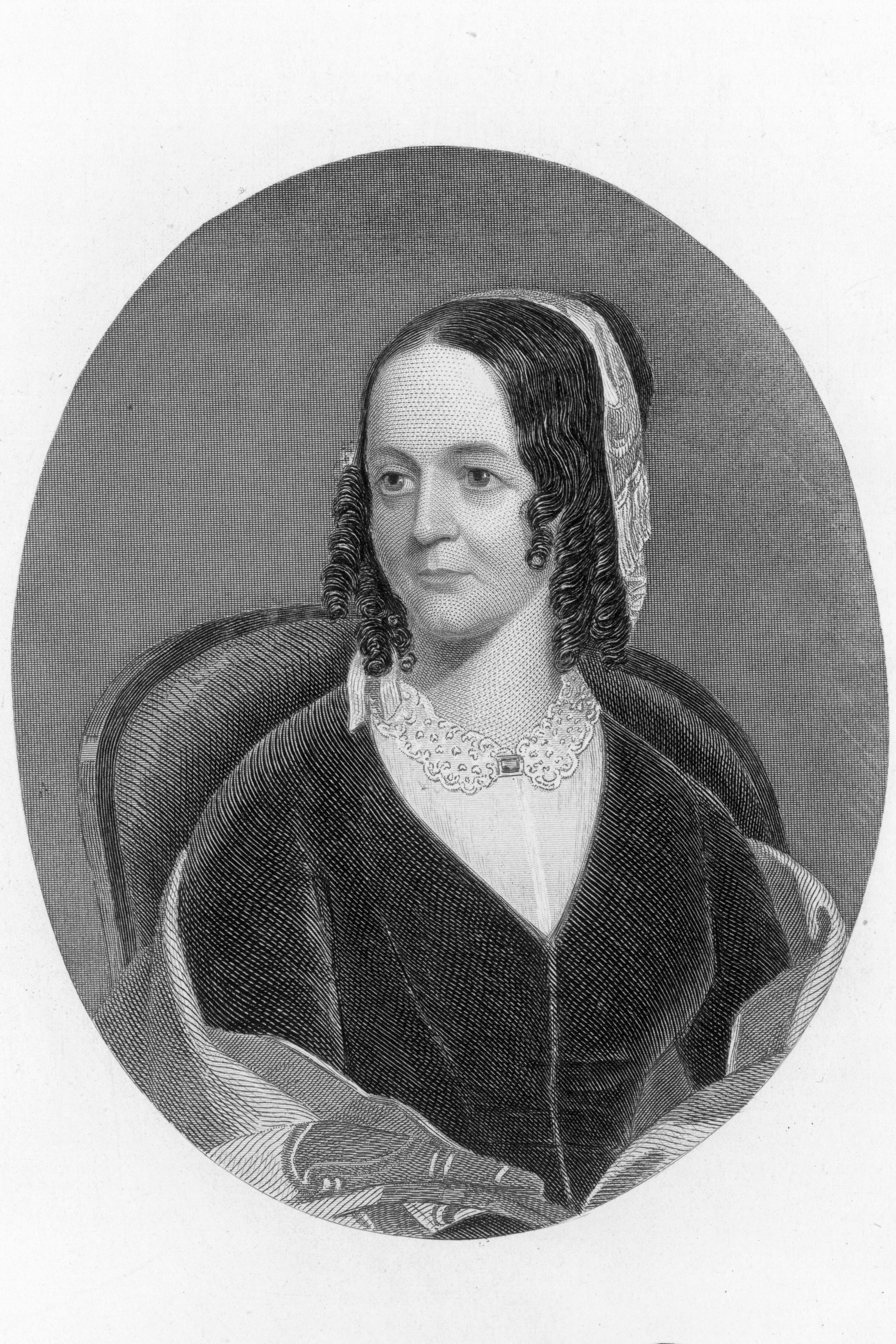
When most Americans think of the first Thanksgiving, their minds probably turn to a semi-mythical 17th-century feast shared by pilgrims and Native Americans. Fewer may know that the modern version of a nation-wide Thanksgiving holiday didn’t actually come about until the late 19th century.
It was 1863 when President Abraham Lincoln issued a proclamation declaring “a Day of Thanksgiving and Praise,” the culmination of a 36-year campaign started by so-called “mother” or “godmother” of Thanksgiving, Sarah Josepha Buell Hale—a magazine editor and writer who many say also wrote the poem that became the nursery rhyme “Mary Had a Little Lamb.”
Born on a New Hampshire farm in 1788, Hale was known as the “Lady Editor” of Godey’s Lady’s Book, a periodical founded by the “plump, benign” publisher Louis Godey and “[b]y far the most phenomenally successful of any magazine issued before the Civil War,” as TIME put it in 1930. Under her leadership, the publication popularized white wedding dresses and Christmas trees, trends often credited to Britain’s Queen Victoria. In the magazine’s pages, Hale swore by the wrinkle-busting power of applying brown butcher paper soaked in apple vinegar to the forehead and described pigeons as “about the only bird in New England worth cooking.”
TIME also characterized her as “a crusader urging the admission of women to the practice of medicine, more thorough female education, foreign missions,” while Fortune‘s columnist John Chamberlain wrote that “she was annoyed by the menial position of pre-Civil War women and proceeded to put the flattering term ‘domestic science’ into the language” in the magazine’s A History of American Business. She even helped finance the all-female Vassar College, founded in 1861. But she did not believe in women’s suffrage, nor did she believe that women could do all professions just as well as men. Rather, as a widow and mother of five children, she believed that a high-quality education was essential to preparing women for “the most important vocation on earth…that of the Christian mother in the nursery.”
Her lobbying effort to make Thanksgiving holiday can be traced back to a passage of her 1827 novel Northwood. “We have too few holidays,” she wrote. “Thanksgiving like the Fourth of July should be a national festival observed by all the people … as an exponent of our republican institutions.” According to Melanie Kirkpatrick’s history of the occasion, Thanksgiving: The Holiday at the Heart of the American Experience, in addition to publishing editorials in Godey’s Lady’s Book, Hale would promote her campaign by publishing Thanksgiving-themed poems, tales of families happily dining together, and recipes for autumnal fare like roast turkey, pumpkin pie and sweet potato pudding, to make people hunger for a day when they could eat all of these delicious foods.
Get your history fix in one place: sign up for the weekly TIME History newsletter
She also launched a letter-writing campaign to members of Congress, governors and Presidents. President Zachary Taylor said around 1849 that it was up to the states to decide when and whether to declare a Thanksgiving holiday; in that period, such a holiday was often celebrated anywhere from September to December, depending on the place. Some politicians thought the “day of public thanksgiving and prayer” declared by George Washington in 1789 violated the separation of church and state. And some in the South saw Thanksgiving as “another manifestation of intrusive, New England moralism,” according to Ryan P. Jordan’s Church, State, and Race: The Discourse of American Religious Liberty, 1750-1900. That’s one reason why Virginia Governor Henry Wise said he would not support this “theatrical national claptrap that is Thanksgiving.”
But, in a Sept. 28, 1863 letter to Lincoln, Hale argued the other side. She made the case that a “National and fixed Union Festival” should occur on the last Thursday of November, annually, because the last Thursday of November was when George Washington had declared the first national Thanksgiving in 1789. On Oct. 3, Lincoln issued the proclamation designating “the last Thursday of November” as a day of Thanksgiving, arguing in several newspaper editorials that, “in the midst of a civil war of unequalled magnitude and severity, the American people should take some time for gratitude.”
Next, Hale turned her efforts to making Thanksgiving a law of the land through an act of Congress—but she passed away in 1879 at the age of 91. It would be more than 60 years until President Franklin D. Roosevelt signed a joint resolution, passed by Congress, which took into account years when there are five Thursdays in November and declared the fourth Thursday of the month a Federal Thanksgiving Day holiday.
More Must-Reads from TIME
- Inside Elon Musk’s War on Washington
- Meet the 2025 Women of the Year
- The Harsh Truth About Disability Inclusion
- Why Do More Young Adults Have Cancer?
- Colman Domingo Leads With Radical Love
- How to Get Better at Doing Things Alone
- Cecily Strong on Goober the Clown
- Column: The Rise of America’s Broligarchy
Write to Olivia B. Waxman at olivia.waxman@time.com